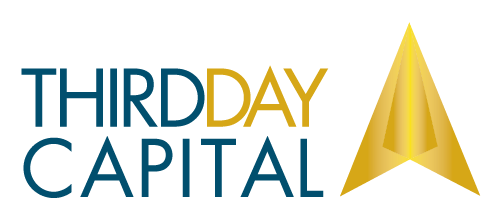I wrote the following article for Trusts and Estates Magazine, which was published in its March issue, and posted on its website. For those without a subscription to the magazine, you can read the article in its entirety here.
It’s hard to watch or read the news without seeing another story about the sharp downdraft in financial markets. And although bear markets eventually spur bull markets, bear markets also spur litigation by disgruntled investors. For Trustees, this risk is particularly acute given the higher standards imposed upon them and the personal liability associated with failing to attain to them.
For decades, investment advisers have employed the Investment Policy Statement (IPS) as a best practice that defines how an investment portfolio will be managed (and why), but the IPS has proven its worth in litigation as a strong defense in favor of an investment adviser’s actions. No one can control the direction of the markets, and all investments entail the risk of loss, but advisers who thoughtfully develop an Investment Policy, formally document it in the IPS, and follow it, have a much stronger defense in court against their plaintiffs. Which is why investment advisers should draft an IPS for all trust assets they manage, and trustees should work with their investment advisers to draft an IPS that applies to the sleeve of assets that adviser manages. This best practice should be applied to all sleeves of assets in a trust, regardless of whether that sleeve holds publicly traded securities like stocks and bonds or illiquid investments like private equity, a family business, venture capital, mineral rights, or real estate.
However, if a trustee relies solely on the investment adviser to draft an IPS for the particular sleeve of assets that adviser manages, and neglects to draft an IPS specifically for the trust as a whole, trust assets may, on the whole, perform in unexpected or undesirable ways, and in the process, the trustee creates an avenue by which a disgruntled beneficiary could more easily prevail in court.
Although we are not aware of a specific rule or law that explicitly mandates a trust-level IPS, as investment professionals and trustees, we assert that satisfying a trustee’s myriad duties pragmatically requires one. We look to investment industry best practices and regulations, the Prudent Investor Rule (the Rule), the Uniform Prudent Investor Act (UPIA), and the Uniform Trust Code (UTC) on which to base our conviction. Moreover, we encourage trustees to draft trust-level IPS’s for every trust, regardless of size or complexity; the IPS depth and detail can reflect the trust’s size and complexity, and smaller, simple trusts don’t require a lengthy, complex IPS. Nevertheless, trustees should draft a trust-level IPS for each trust they serve as fiduciary for because trustees are subject to a number of fiduciary obligations which logically can only be satisfied if a trustee independently drafts a trust-level IPS.
For example, the UPIA, building on the Prudent Investor Rule, formally embraced Modern Portfolio Theory (MPT), a holistic approach to managing investment portfolios initially proposed by Harry Markowitz in 1952. The UPIA’s adoption of MPT, like the Rule’s adoption before it, discarded the antiquated approach of evaluating the suitability of individual investments based on their individual characteristics (such as risk of loss or volatility) and directed trustees to evaluate the suitability of an individual investment in light of its role in meeting the investment portfolio’s goals, objectives, and risk tolerance, in relation to the other investments within the portfolio. Markowitz was able to demonstrate mathematically that adding an “unsuitable” investment to a portfolio could improve the overall portfolio’s risk and return profile, making it more efficient. Therefore, under the Rule and the UPIA, when viewed in the context of its role in a portfolio, and its relationship to and interaction with the other securities in a portfolio, all investments are potentially “suitable”, and no investment is inherently “unsuitable”.
Hence, the mandate that trustees adopt a trust-level perspective when developing the investment strategy, and when determining which asset classes, sectors, sub-sectors, and security types are suitable and unsuitable for that trust. The formal process of drafting a trust-level IPS facilitates this process and documents the results.
Moreover, because the Rule and UPIA open the door to investments sometimes previously considered “unsuitable” for trusts, such as high-yield bonds (“junk bonds”), private equity / venture capital, real estate development, and investments in emerging and frontier markets, the likelihood that a trust of any significant size holds a single asset class, or that all of its assets are managed by a single investment adviser, is now unrealistic. As such, the trustee stands apart in their obligation to employ a trust-level perspective and alone has the responsibility to develop a trust-level investment strategy, to determine which asset classes are suitable for the trust and those which are not, to determine which investment advisers should be hired and how those investment advisers will be evaluated, and ultimately, whether the trust assets are meeting their stated goals and objectives, for the benefit of the beneficiary, to which the trustee is providing a trust-level accounting that presumably includes a trust-level performance assessment, at least annually. Accordingly, the trust-level IPS is pragmatically necessary in order for the trustee to satisfy their general fiduciary duty and more specifically, their reporting obligations.
The Rule, UPIA and UTC delineate a series of overlapping and redundant fiduciary duties. However, the UPIA stands apart in its imposition of a Professional Fiduciary standard for professional fiduciaries. In Section 2.f, with further clarification in the Section 2 comments, the UPIA discusses the prudence standards that will be applied to fiduciaries who hold themselves out as having specialized fiduciary skills or experience, which is arguably what all professional fiduciaries claim. The Professional Fiduciary standard exceeds the Prudent Amateur standard, and logically so; anyone who claims to possess above average fiduciary skills and experience should be expected to demonstrate them, and should be liable, after claiming to have them, for not demonstrating them. Courts have widely disallowed defenses in which the trustee claimed they exercised “ordinary skill and care” and often elevate what would otherwise be considered a negligent act or breach of trust, to gross negligence and/or severe breach of trust when the trustee claimed to be a professional.
Because IPS’s are standard practices in the investment world, and top-level IPS’s have been standard practice for endowments, pension funds, foundations, and other institutional investors for decades, a trust-level IPS reasonably falls within the scope of the actions expected of a “Prudent Professional”, and the professional trustee that fails to draft one arguably fails the Professional Fiduciary standard. Drafting a trust-level IPS is therefore a logically necessary step that all professional fiduciaries should take.
The myriad regulatory aspects notwithstanding, a trust-level IPS is not simply a defensive liability mitigation exercise. A trust-level IPS is a best practice, initially adopted by endowment and pension funds which share many characteristics with trusts. The trust-level IPS is a valuable thought exercise and powerful communication tool that will ease a trustee’s future investment-related decision-making processes and strengthen their relationship with their beneficiaries, both of which are increasingly important during a market phase such as this one.
For example, the trust-level IPS, in light of the trust’s goals and provisions, defines the overall investment strategy and objectives, and in so doing, facilitates the determination of fairness among various beneficiaries, or classes of beneficiaries, such as income beneficiaries and remaindermen, an obligation trustees have under the Duty of Impartiality, as expressed in section 803 of the UTC.
Moreover, the trust-level IPS will or can explain 1) the overall investment strategy, 2) which asset classes the trustee determined were suitable and why, 3) how investment advisers will be hired, assessed, and replaced, and perhaps most importantly for the beneficiary, 4) what levels of return and volatility the beneficiary can expect in the trust, the specific levels of projected income and growth, the anticipated average rates of return, the potential ranges of those rates of return, and the realistic potential decline in the trust assets during a bear market. Armed with such understanding, the beneficiary can sleep more peacefully at night, knowing that even extreme market volatility is incorporated into the IPS, and therefore, is “part of the plan”.
A trust-level IPS can serve as a guide for the Trustee in other situations in which potential conflicts of interest arise. Take, for example, a situation in which the grantor expresses their desire for the trustee to retain a specific investment adviser. With a trust-level IPS, the trustee can fairly, and independently, establish the investment strategy, determine whether that investment adviser satisfies a need, and if so, how that investment adviser will be evaluated. In the event the investment adviser struggles to serve the trust effectively, the trustee can use the IPS as a foundation to make the decision to replace the investment adviser, and if necessary, reference the IPS during conversations with the grantor and/or beneficiary. If litigation were to ensue, the trustee could use the IPS as defense for their decision.
Effective Investment Policy Statements incorporate the legal and regulatory requirements, the trust’s purpose and provisions, as well as the beneficiary’s unique circumstances, goals, objectives, and risk tolerances. The IPS for a trust whose beneficiary is a highly paid executive will be different than the IPS for a trust whose beneficiary is a social worker that relies on the trust for supplemental income, even if they are siblings and the provisions of the trusts are identical. The IPS should incorporate the characteristics of each asset class, their historical rates of return (average and ranges), their historical volatility (average levels, historical ranges, and situations that drive volatility higher or lower), and their interaction with each other. The trust-level IPS should define the overall benchmark against which the trust performance will be evaluated.
With that said, drafting a trust-level IPS requires a thoughtful approach and diligent execution. If a trustee comes from a financial or investment background, they will likely have the skills to draft the trust-level IPS themselves. However, trustees with tax, legal, or social working backgrounds may not possess the skills, experience, and resources necessary to draft an effective trust-level IPS. Section 807 of the UTC specifically discusses the obligation to delegate when the trustee does not possess the skills and experience necessary to satisfy their fiduciary duty in a particular area. Developing the trust-level investment strategy and drafting the trust-level IPS is potentially a situation in which delegation is the best practice, but trustees should carefully select their agent when developing the investment strategy and drafting the IPS.
While a trustee might be tempted to hire an existing investment adviser as a consultant to help them develop the overall investment strategy and draft the trust-level IPS, an inherent conflict of interest exists between the investment adviser and the trustee, whereby the investment adviser could capitalize on the trustee’s lack of experience and knowledge and suggest a trust-level investment strategy and IPS that favors that investment adviser’s services, a likely breach of the trustee’s Duty of Loyalty. It is therefore preferable for trustees that lack the background and skills necessary to draft a trust-level IPS to hire an independent and objective consultant whose role is solely to help the trustee draft a comprehensive and impartial trust-level investment strategy and IPS. As a side note, that same consultant could be retained to help the trustee evaluate existing investment advisers and help the trustee replace an investment adviser should the need arise, an arrangement that is widely utilized in the endowment and institutional investment.
Which brings us to our last point. Diligently and prudently developing a trust-level investment strategy and drafting a trust-level IPS will not prevent investment losses, and may not even prevent litigation. Technically, whether the beneficiary has a strong case or not, they have a right to sue. Which means that an IPS cannot offer perfect protection in all circumstances. There are other resources and services, such as Fiduciary Liability insurance, that trustees should consider as part of their overall risk mitigation strategy. Between operational best practices such as the trust-level IPS and proper liability coverage, trustees should sleep peacefully at night, regardless of the financial market turbulence.


